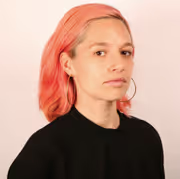Things We Dare Not Do Discussion Guide Opening Activity
Opening Activity

This activity is useful as a way to invite participants into a shared space, ground one another in the space of community so everyone can be present during dialogue, and to establish a shared sense of intention.
Before You Begin: Here are some practices you can use to create discussion spaces that are powerful, challenging, safe and respectful.
Community Agreements
Whether you are a group of people coming together once for this screening and discussion, or a group that knows each other well, creating a set of community agreements goes a long way to fostering powerful, insightful discussion in a manner that draws in and respects all participants, especially when tackling intimate or complex conversations around identity. Here is a model of Community Agreements you can review. You as the facilitator can gauge how long your group should take to form these agreements. However, these steps will help the process:
- Pass around sample community agreements and take time to read aloud as a group to make sure all participants can both hear and read the text.
- Allow time for clarifying questions; make sure all understand the purpose of making a set of agreements and allow time to make sure everyone understands the agreements themselves.
- Go around in a circle and have every participant name an agreement they would like to include. Chart this in front of the room where all can see.
- Go around 2-3 times to give participants multiple chances to contribute and to also give a conclusive end to the process.
- Read the list aloud.
- Invite questions or revisions.
- Ask if all are satisfied with the list.
- Ask all participants to sign the list of agreements. Leave it where all can see. As the facilitator, be mindful of the agreements throughout your session, noting if someone speaks or acts in a way that runs counter to them.
Create and Display an Outline
Another practice that builds a powerful foundation for a screening and discussion is creating a structure with clear beginning, middle and end that includes opening and closing activities.
For this screening, I suggest the following:
Opening: A Visualization (~5 minutes)
Note: this can be used to prepare for the following practice, “A Recollection”
Invite participants to close or lower their eyes. Ask them to take a few slow inhales and longer exhales. (2 seconds for the inhale and 4 for the exhale is a manageable count for most people.) Invite them to think back to their younger selves and to go as far back as they can remember. Ask them to try and find a memory before they had a clear sense of themselves as “boy” or “girl”, but simply as themselves. Or perhaps they can find a memory in which being “boy” or “girl” did not matter to the activity or the moment. Once they have chosen the moment, ask them to remember it with as much detail as they can. The sights, sounds, smells. Their age. What they were wearing. Who they were with. How they felt. What they were doing. Talk through the prompts at a slow pace. Allow a minute or so after the prompts for folks to continue remembering in silence. Bring the visualization to a close with another set of inhales and exhales and invite participants to open their eyes/look up and return to the group.
Preparation Activity: Recollection
~Time length depends on size of group; approximate about 5 minutes plus 2 minutes per participant
NOTE: Make sure participants have paper and pen/drawing materials and a comfortable surface to write/draw on
Ask participants to now take that visualization and write or draw it in as much details as they can. Inform them it will be for their eyes only, and that sharing will be optional. Allow five minutes.
When done, round robin style, invite participants to share their recollection. As the facilitator, try to take notes on patterns or themes that emerge in the recollection. Notice what repeats might emerge. When all who choose to share are done, share out the themes and patterns that you heard in the sharing out.
Thank everyone for their participation.
Closing: Affirmation to Younger Self
~Time length depends on size of group; estimate 1 minute per person
The closing follows the screening and discussion. Ask all participants to think about this question and write the answer of an affirmation to their younger self: “What would you tell your younger self about being in the world, in your particular body, in your particular gender?” Share aloud around the circle.
***
Display: It can be helpful for people to have a sense of the order and timing of an event. Also, make sure everyone knows where they can access water, bathrooms, or any other bio needs.
Here is sample text for a display; either printed on sheets and passed out, or written on a large piece of paper and displayed. Make sure to read the outline aloud at the start of the activity so as to be accessible to all.
- Welcome to the screening & discussion of Things We Dare Not Do.
- Bathrooms and Water can be found “...”
- Opening (2- 5 minutes)
- Setting Community Agreements (10-15 minutes)
- Opening Activity: Recollection (approximate time, and write here)
- Film Screening: Things We Dare Not Do (1 hour and 15 minutes)
- Discussion (20 minutes)
- Closing: Share out (approximate time, and write here)
